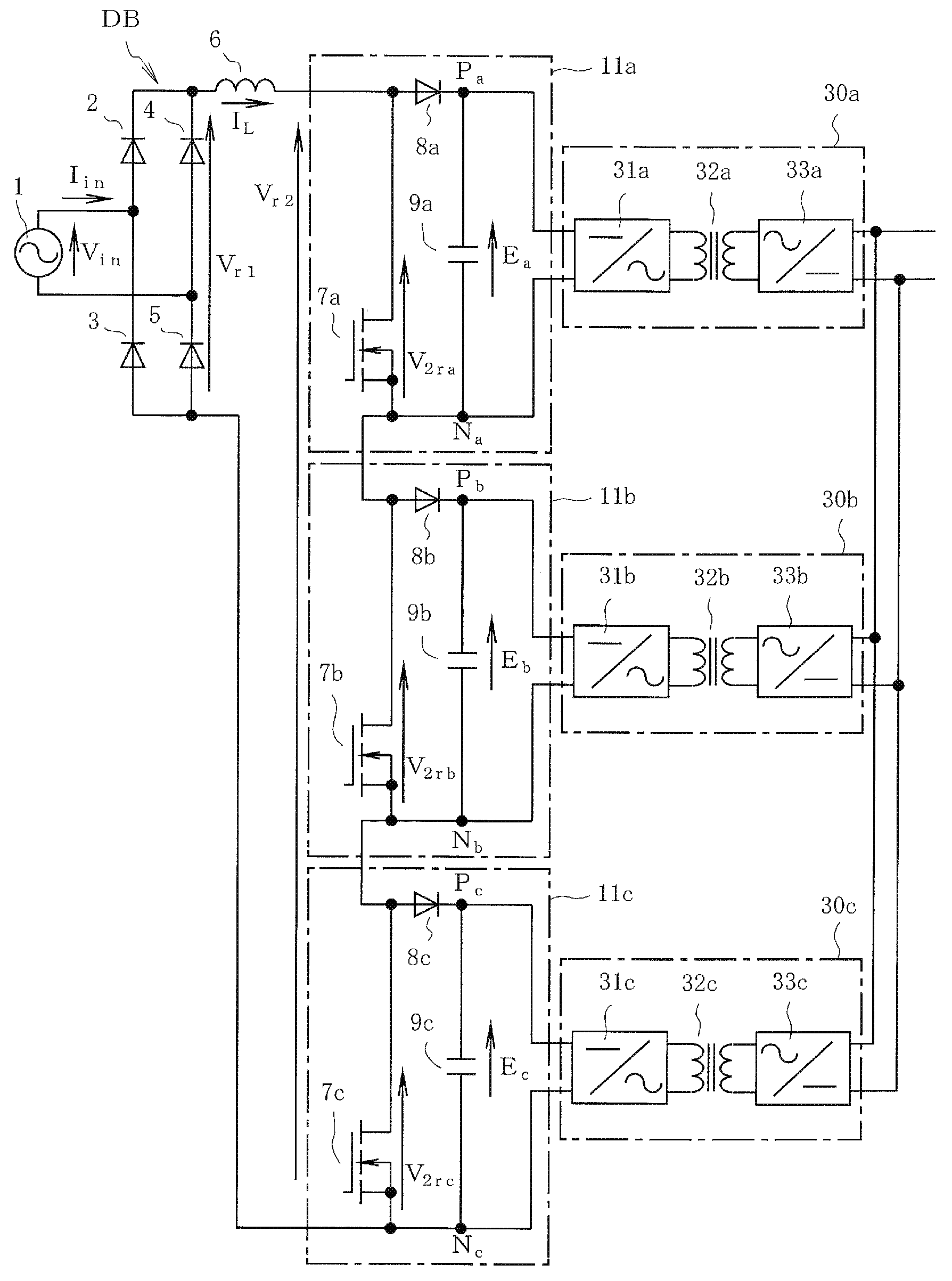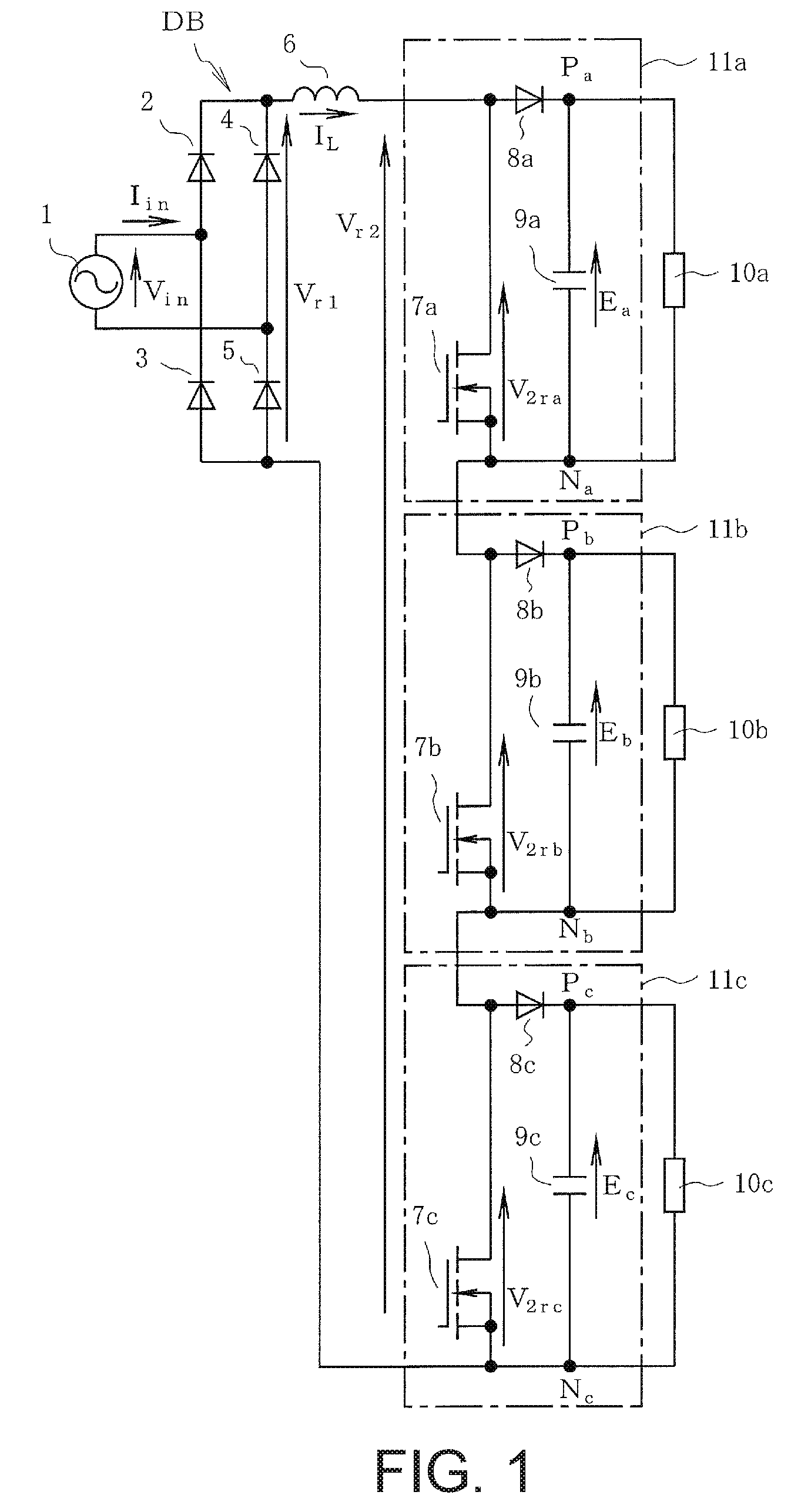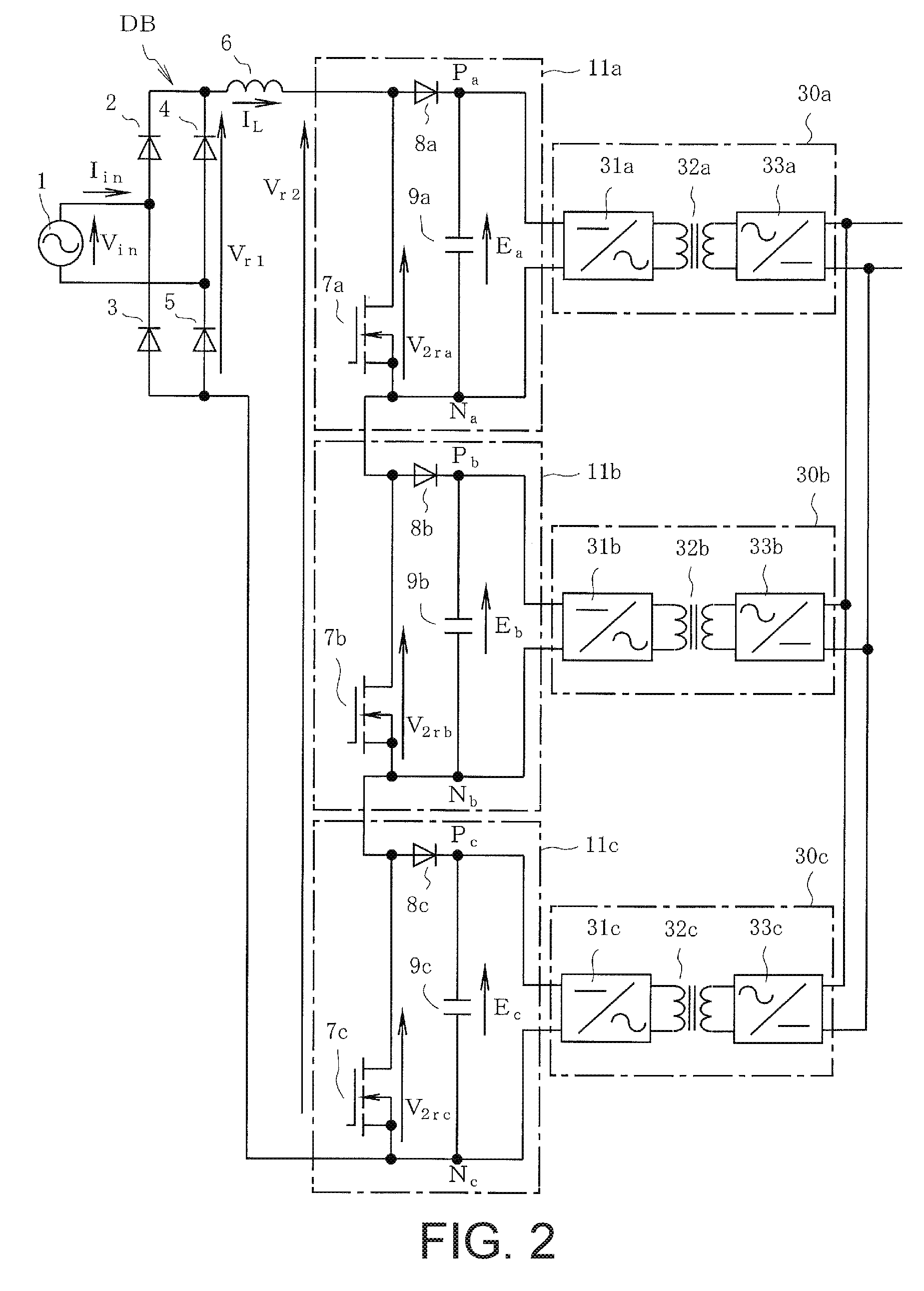Ac-dc converter
a converter and dc technology, applied in the direction of dc-dc conversion, power conversion systems, instruments, etc., can solve the problems of limited examples of such circuits and complex control operations, and achieve the effects of low loss, low resistance voltage, and high device efficiency
- Summary
- Abstract
- Description
- Claims
- Application Information
AI Technical Summary
Benefits of technology
Problems solved by technology
Method used
Image
Examples
embodiment 1
[0074]FIG. 1 is a circuit diagram showing Embodiment 1 of the present invention 1. In FIG. 1, those portions having functions identical to those of FIGS. 10 and 13 are given identical reference characters.
[0075]In FIG. 1, a rectifier circuit DB constituted by diodes 2 to 45 are connected to both ends of an AC power source 1 in a manner similar to the description above. One end of an inductor 6 is connected to a positive-side output terminal of the rectifier circuit DB. Between the other end of the inductor 6 and a negative-side output terminal of the rectifier circuit DB, semiconductor switching devices 7a, 7b, and 7c are connected in series. Other than the MOSFETs shown in the diagram, IGBTs or BJTs may also be used as the switching devices 7a, 7b, and 7c.
[0076]Between the drain and source terminals of the switching device 7a, a diode 8a and a capacitor 9a are connected in series, and a load 10a is connected to the capacitor 9a in parallel. Additionally, between the drain and sour...
embodiment 2
[0083]FIG. 2 shows Embodiment 2 of the present invention in which instead of the loads, DC-DC converter circuits are attached.
[0084]In FIGS. 2, 30a, 30b, and 30c are DC-DC converter circuits, and respectively replace the loads 10a, 10b, and 10c of FIG. 1. All other configurations are identical to those of FIG. 1.
[0085]In the DC-DC converter circuits 30a, 30b, and 30c: 31a, 31b, and 31c are DC-AC converting parts, 32a, 32b, and 32c are transformers, and 33a, 33b, and 33c are AC-DC converting parts (rectifiers). While not shown in the diagram, DC loads are respectively connected to the output sides of the AC-DC converting parts 33a, 33b, and 33c.
[0086]In general, the output frequencies of the DC-AC converting parts 31a, 31b, and 31c are set to a few kHz to a few dozen kHz or more in order to keep the transformers 32a, 32b, and 32c compact.
[0087]In Embodiment 2, the output sides of the AC-DC converting parts 33a, 33b, and 33c are connected together in parallel. On the other hand, the ...
embodiment 3
[0093]In addition, in Embodiment 3, while the frequencies of carriers a, b, and c generated by carrier generators 113a, 113b, and 113c are identical to one another, the phases of the carriers a, b, and c are different from one another as shown in FIG. 4. Here, since there are three groups of the switching units, 11a, 11b, and 11c, the phase difference among the carriers a, b, and c is 360° / 3=120° in electrical angle.
[0094]Note that in FIG. 4, an instantaneous value command of a Vr2 is illustrated for each of the carriers a, b, and c. However, this is only done to facilitate understanding; in reality, there is only a single instantaneous value command for the Vr2. In addition, V2ra, V2rb, and V2rc in FIG. 4 respectively represent input voltages of the switching units 11a, 11b, and 11c of FIGS. 1 and 2, and correspond to PWM pulses of the switching devices 7a, 7b, and 7c.
[0095]As described above, the phases of the carriers a, b, and c are different from one another. As a result, the ...
PUM
 Login to View More
Login to View More Abstract
Description
Claims
Application Information
 Login to View More
Login to View More - R&D
- Intellectual Property
- Life Sciences
- Materials
- Tech Scout
- Unparalleled Data Quality
- Higher Quality Content
- 60% Fewer Hallucinations
Browse by: Latest US Patents, China's latest patents, Technical Efficacy Thesaurus, Application Domain, Technology Topic, Popular Technical Reports.
© 2025 PatSnap. All rights reserved.Legal|Privacy policy|Modern Slavery Act Transparency Statement|Sitemap|About US| Contact US: help@patsnap.com



